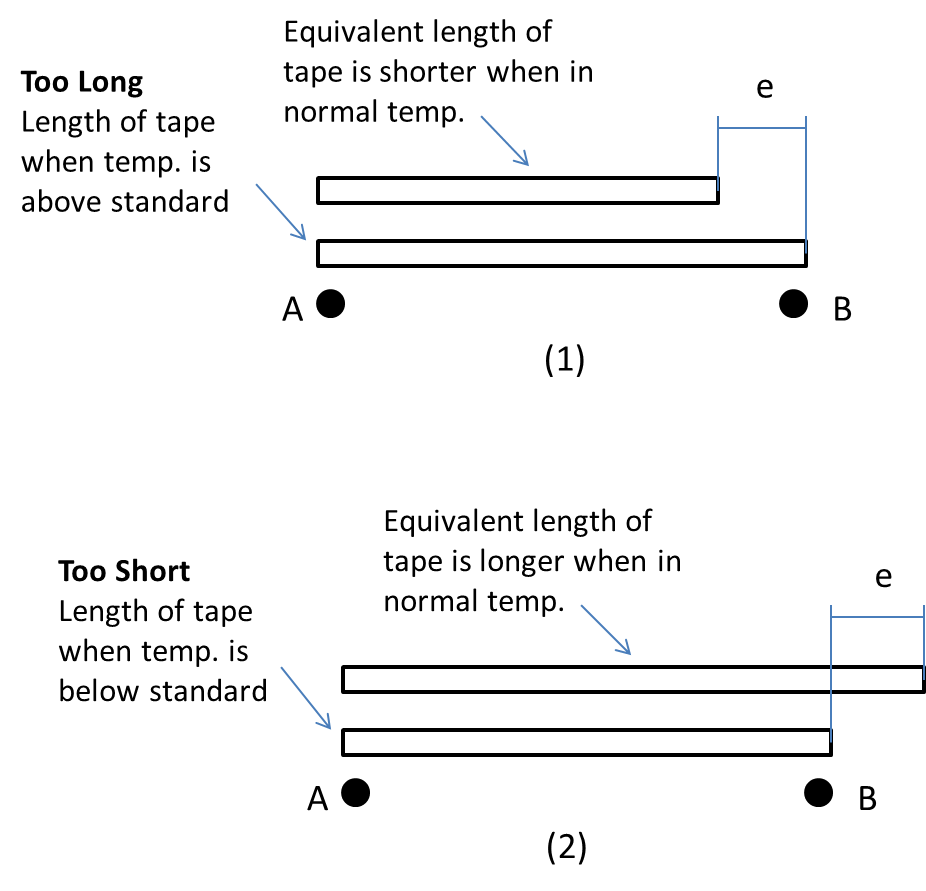Corrections on measuring tapes
The measuring tape is classified as Too Short if its length shrunk due to the temperature that is below the standard temperature. On the other hand, the tape is classified as Too Long if its length elongate due to temperature higher than standard. Corrections of measurements varies depending on the type of measurement that the surveyor uses.Corrections when Measuring Distance between points
Referring to Figure (1), the surveyor measure the two points, A and B, with a tape that is Too Long. This means that if the tape is Too long, the equivalent length of the tape is shorter when on the normal condition. Since we cannot adjust the location of the two points, we adjust the tape reading instead by adding the error, e, to achieve the correct distance of A and B. On the other hand, if the tape is Too Short, Figure (2), the equivalent length of the tape is longer when on the normal condition thus we subtract the error to achieve the correct distance of A and B.
Corrections when Layouting the second point
During the Layouting, the only information we have is the location of the first point, Point A, and its distance, X, to the next point, Figure (3). If the measuring tape is Too Long, the tape is longer than its length when in the normal condition. This means that we need to subtract the error in order to achieve the true location of the second point, Point B. On the other hand, if the tape is Too Short, the tape is shorter that its length when in the normal condition thus we must add the error to achieve the true location.


No comments:
Post a Comment